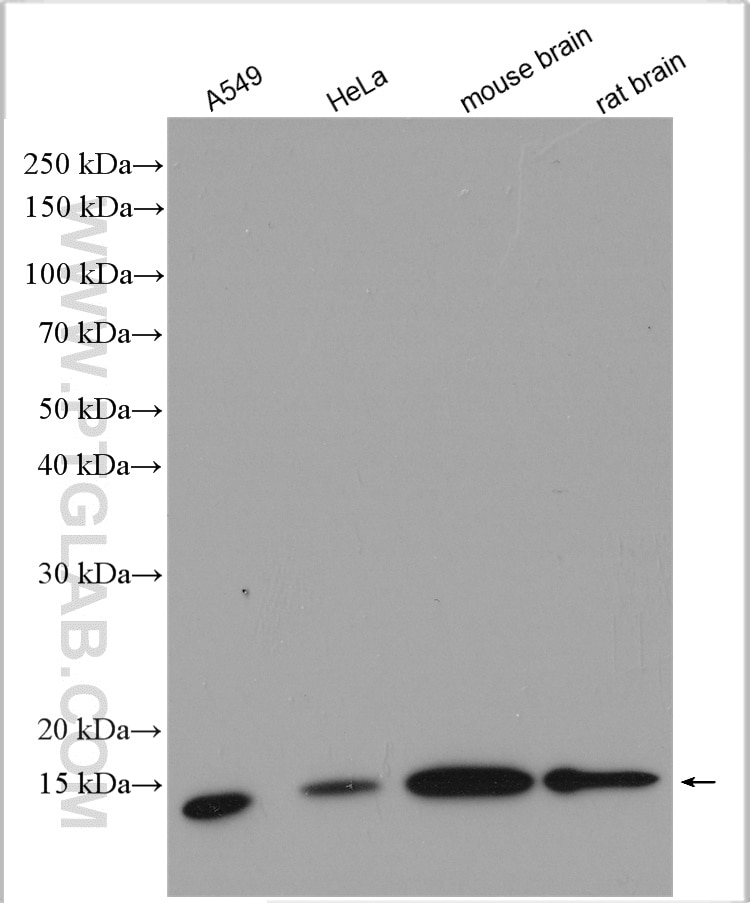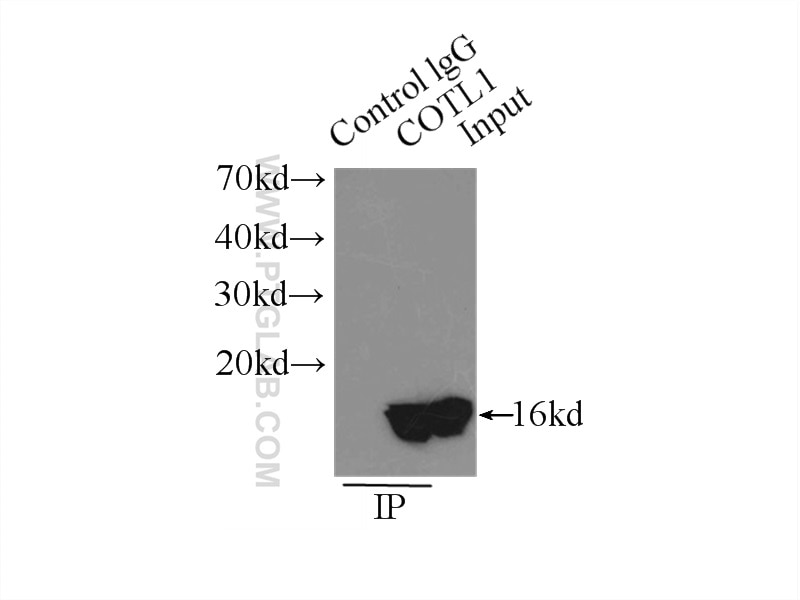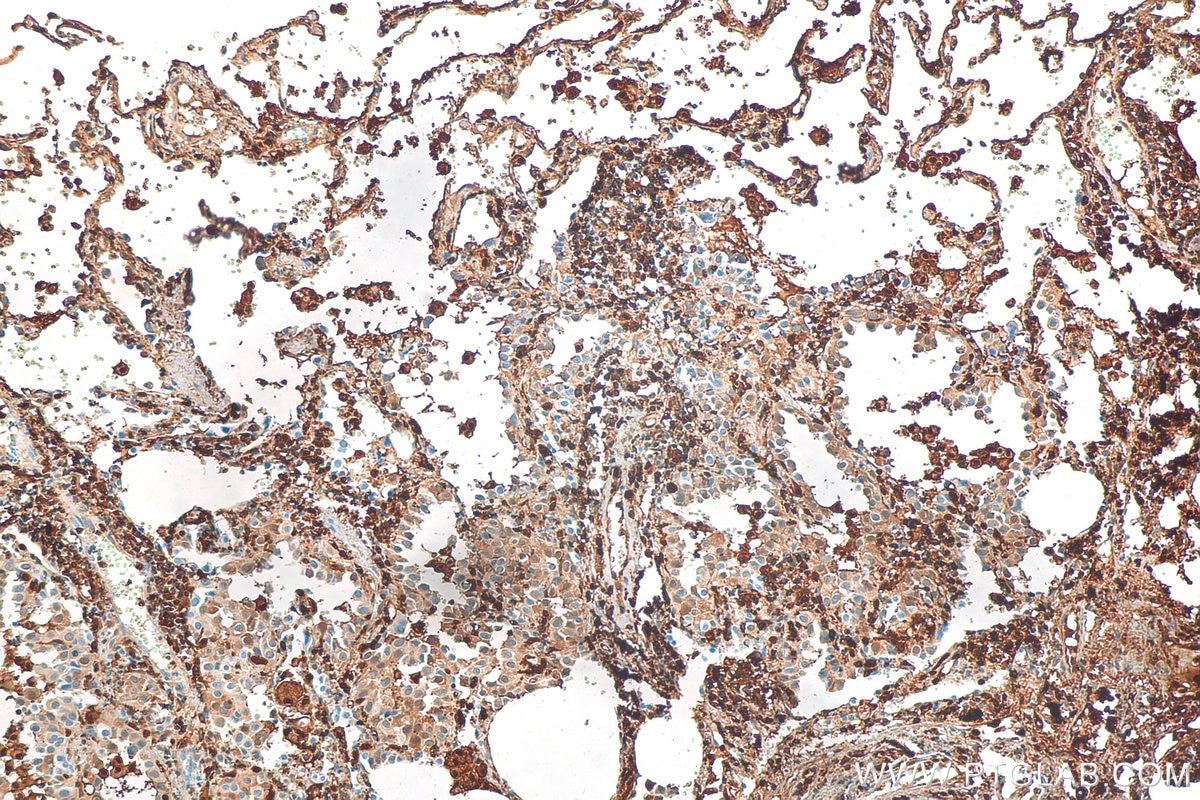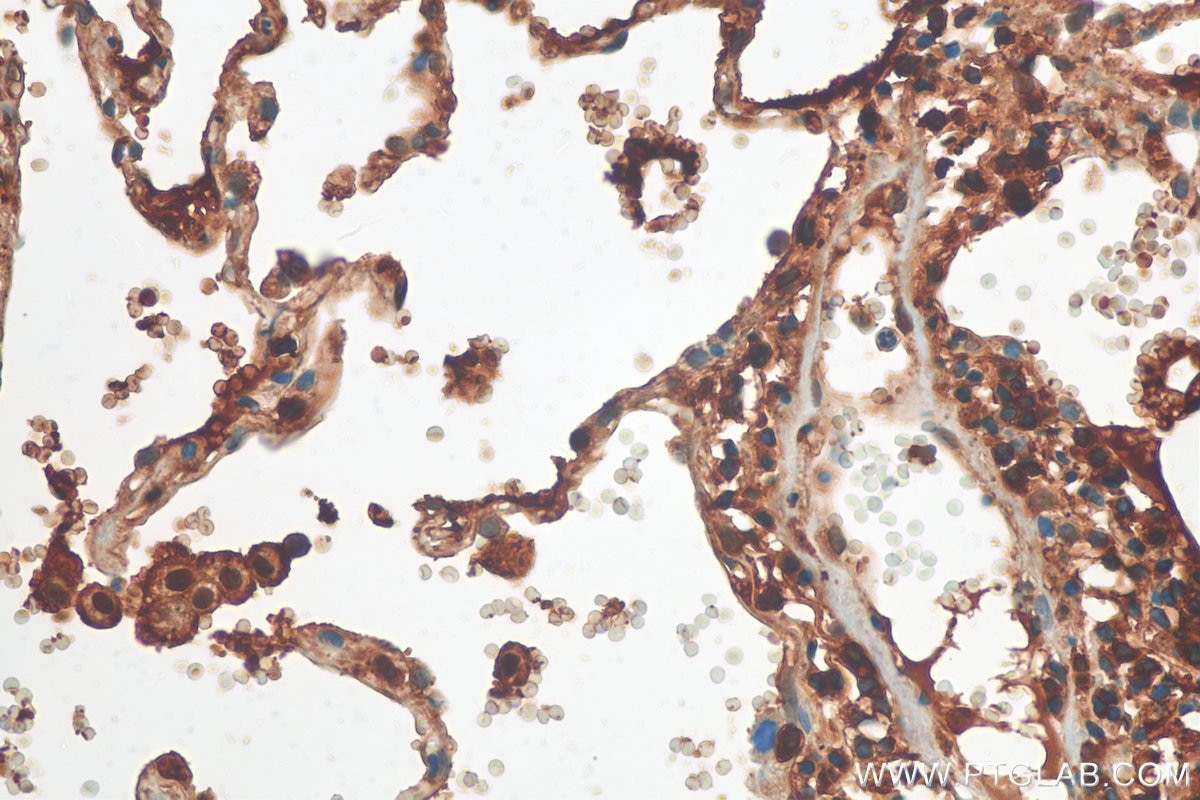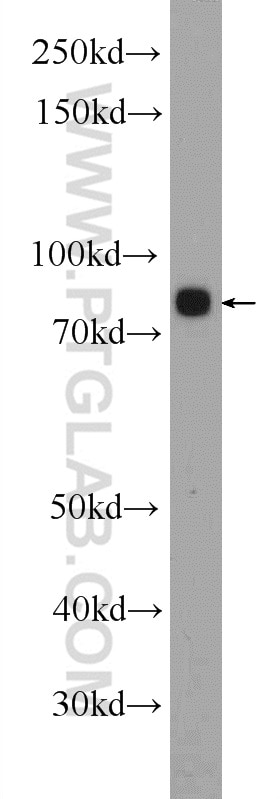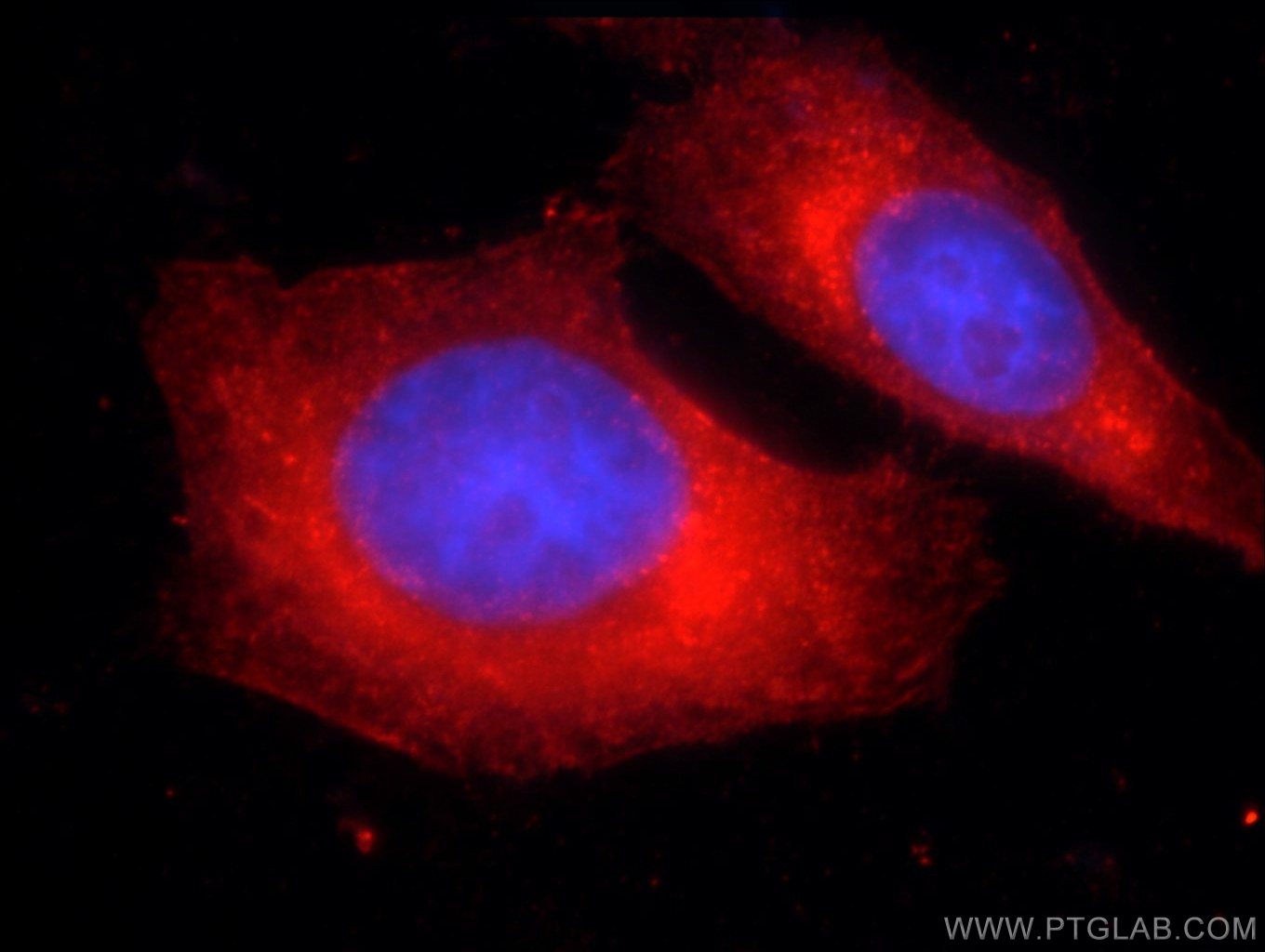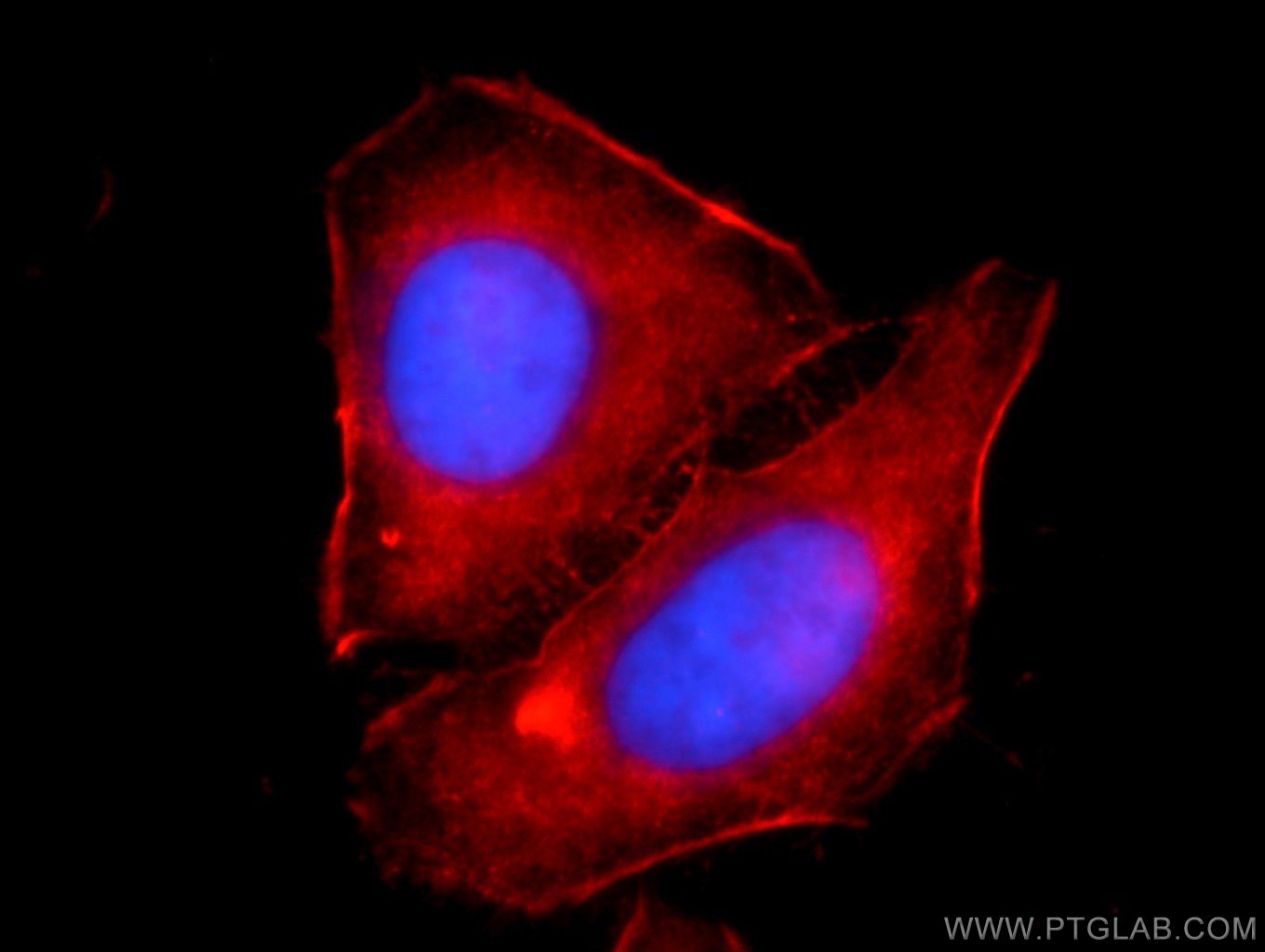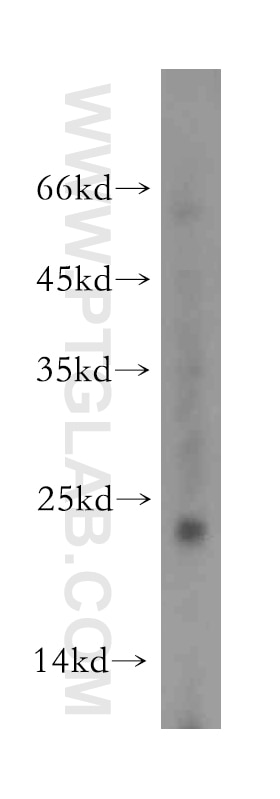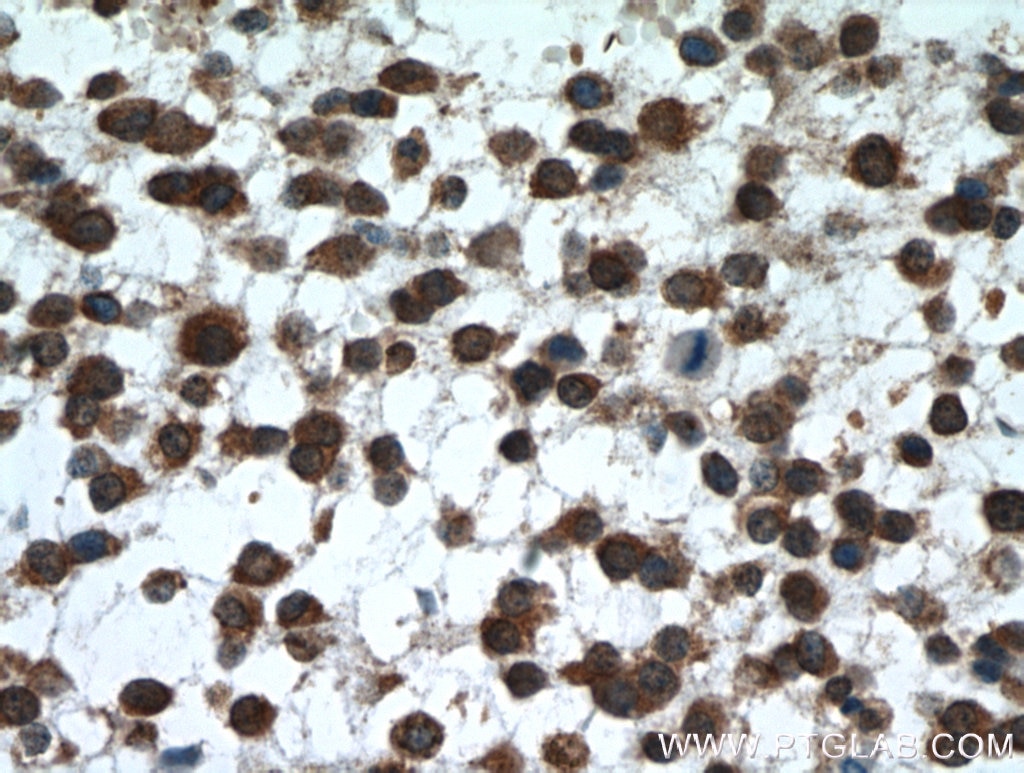- Phare
- Validé par KD/KO
Anticorps Polyclonal de lapin anti-COTL1
COTL1 Polyclonal Antibody for WB, IP, IHC, ELISA
Hôte / Isotype
Lapin / IgG
Réactivité testée
Humain, rat, souris
Applications
WB, IP, IF, IHC, ELISA
Conjugaison
Non conjugué
N° de cat : 10781-1-AP
Synonymes
Galerie de données de validation
Applications testées
| Résultats positifs en WB | cellules A549, cellules HeLa, tissu cérébral de rat, tissu cérébral de souris |
| Résultats positifs en IP | tissu rénal de souris |
| Résultats positifs en IHC | tissu de cancer du poumon humain, il est suggéré de démasquer l'antigène avec un tampon de TE buffer pH 9.0; (*) À défaut, 'le démasquage de l'antigène peut être 'effectué avec un tampon citrate pH 6,0. |
Dilution recommandée
| Application | Dilution |
|---|---|
| Western Blot (WB) | WB : 1:2000-1:16000 |
| Immunoprécipitation (IP) | IP : 0.5-4.0 ug for 1.0-3.0 mg of total protein lysate |
| Immunohistochimie (IHC) | IHC : 1:50-1:500 |
| It is recommended that this reagent should be titrated in each testing system to obtain optimal results. | |
| Sample-dependent, check data in validation data gallery | |
Applications publiées
| KD/KO | See 1 publications below |
| WB | See 7 publications below |
| IHC | See 4 publications below |
| IF | See 1 publications below |
Informations sur le produit
10781-1-AP cible COTL1 dans les applications de WB, IP, IF, IHC, ELISA et montre une réactivité avec des échantillons Humain, rat, souris
| Réactivité | Humain, rat, souris |
| Réactivité citée | Humain, souris |
| Hôte / Isotype | Lapin / IgG |
| Clonalité | Polyclonal |
| Type | Anticorps |
| Immunogène | COTL1 Protéine recombinante Ag1230 |
| Nom complet | coactosin-like 1 (Dictyostelium) |
| Masse moléculaire calculée | 16 kDa |
| Poids moléculaire observé | 16 kDa |
| Numéro d’acquisition GenBank | BC010884 |
| Symbole du gène | COTL1 |
| Identification du gène (NCBI) | 23406 |
| Conjugaison | Non conjugué |
| Forme | Liquide |
| Méthode de purification | Purification par affinité contre l'antigène |
| Tampon de stockage | PBS avec azoture de sodium à 0,02 % et glycérol à 50 % pH 7,3 |
| Conditions de stockage | Stocker à -20°C. Stable pendant un an après l'expédition. L'aliquotage n'est pas nécessaire pour le stockage à -20oC Les 20ul contiennent 0,1% de BSA. |
Informations générales
COTL1, also named as CLP, binds to F-actin in a calcium-independent manner. And it has no direct effect on actin depolymerization.
Protocole
| Product Specific Protocols | |
|---|---|
| WB protocol for COTL1 antibody 10781-1-AP | Download protocol |
| IHC protocol for COTL1 antibody 10781-1-AP | Download protocol |
| IP protocol for COTL1 antibody 10781-1-AP | Download protocol |
| Standard Protocols | |
|---|---|
| Click here to view our Standard Protocols |
Publications
| Species | Application | Title |
|---|---|---|
J Proteome Res Proteomic analysis of human small cell lung cancer tissues: up-regulation of coactosin-like protein-1. | ||
Oncotarget Genetic and epigenetic silencing of mircoRNA-506-3p enhances COTL1 oncogene expression to foster non-small lung cancer progression. | ||
PLoS One TDP-43 identified from a genome wide RNAi screen for SOD1 regulators.
| ||
Exp Lung Res Exposure to cigarette smoke extract and lipopolysaccharide modifies cytoskeleton organization in bronchial epithelial cells. | ||
J Investig Med Differential expression of PAI-RBP1, C1orf142, and COTL1 in non-small cell lung cancer cell lines with different tumor metastatic potential. |
Avis
The reviews below have been submitted by verified Proteintech customers who received an incentive forproviding their feedback.
FH Susanne (Verified Customer) (06-29-2019) | Good staining with low background in WB and IF.For IF fixation was done with methanol 10 min at -20°C (pre cool), the antibody was diluted in 1%BSA/PBS.For WB the antibody was diluted in PBST-0,1%/5%skim milk and incubated over night.
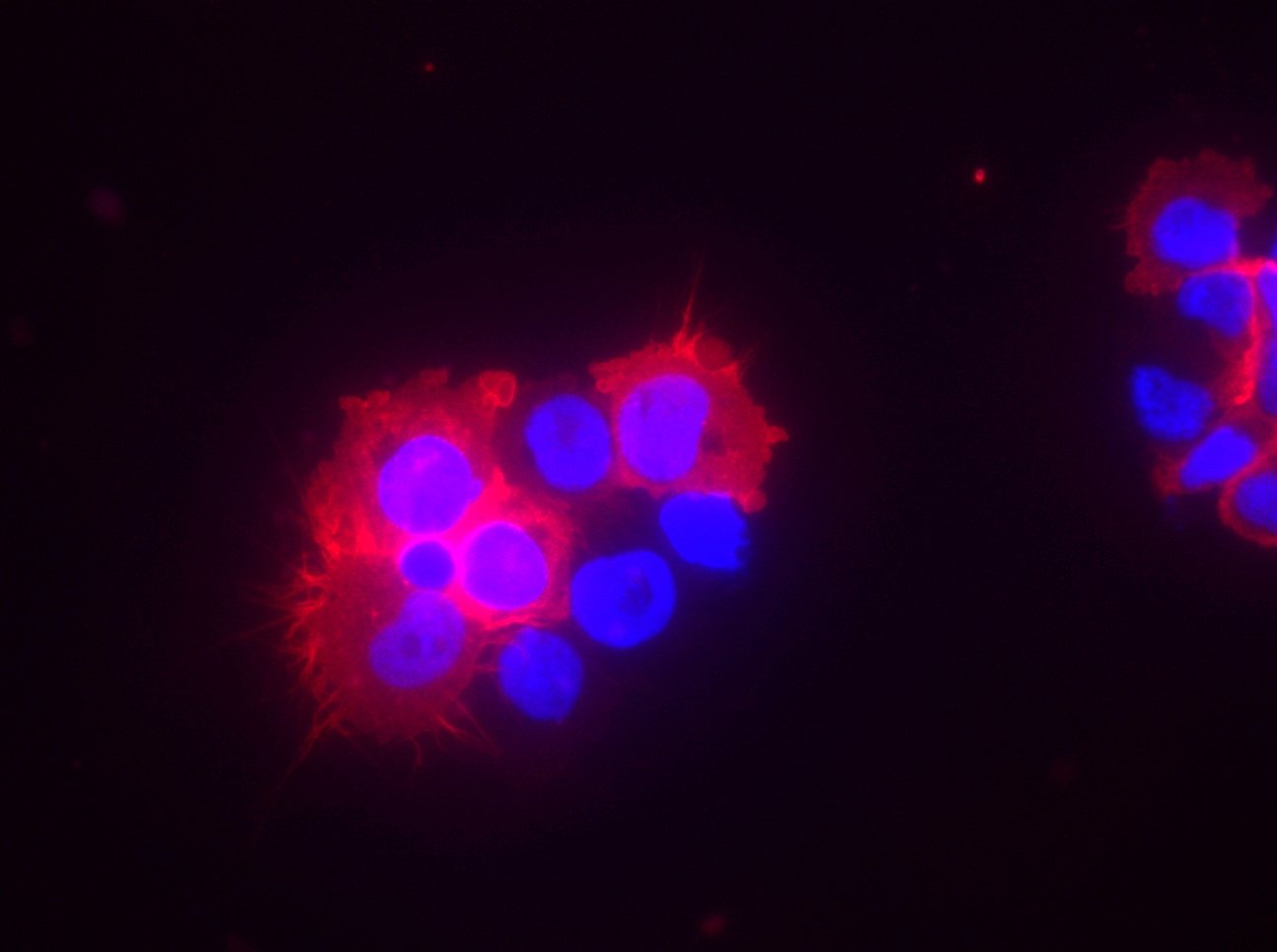 |
